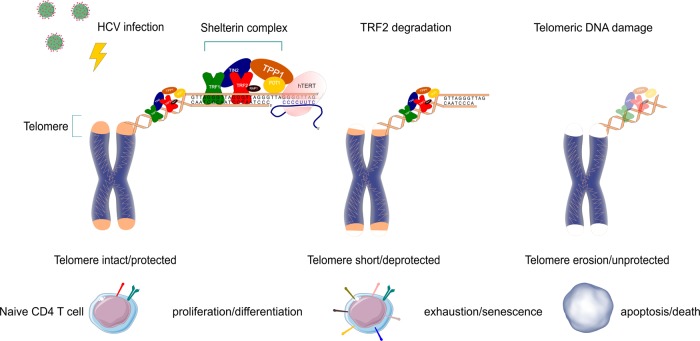Fig. 6. A model of HCV-induced TRF2 inhibition, leading to T-cell telomere uncapping and attrition, accelerating cell senescence, apoptosis, and naïve T-cell loss during HCV infection.
HCV infection promotes T-cell activation/proliferation/differentiation and induces TRF2 protein inhibition, which leads to telomere deprotection and triggers DNA damage and telomere erosion, thus contributing to T-cell apoptotic death. Excessive T-cell apoptosis feedback necessitates homeostatic over-expansion, then cell exhaustion/senescence, imposing replicative stress on unprimed naïve T cells and further accelerating naïve T-cell loss. This incessant regulatory cascade represents a novel molecular mechanism underlying T-cell senescence and naïve T-cell loss, which contributes to the viral persistence and vaccine non-responsiveness in human viral infection

